

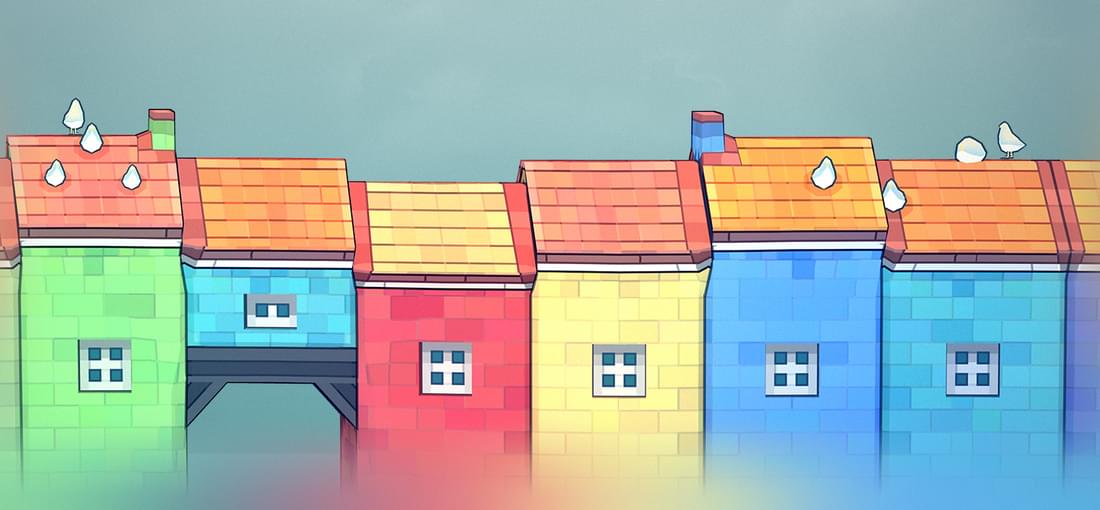
‘Townscaper’ started out as a PC game that I could play with my preschooler. Before long, it became more of my game. While my little one was satisfied with a small island of 5 multi-coloured buildings, I had grander ambitions. Under my watch, the tiny island expanded into a settlement that has a castle, 3 canals, and a tall tower. The design of my town was inspired by the landscape of and architecture on the island of Burano, and Cinque Terre in Italy. I reminisced about my vacation in those places as I built my town. I also found myself subconsciously creating a fictional history for it, and imagining how the locals there would go about their day. It’s amazing how this town designing game stirred my imagination in different ways. The appeal of ‘Townscaper’ is its simplicity. There are no resource management, zoning restrictions, and citizen satisfaction to worry about. All you have to do is select the colour of the building you’re constructing, and the game automatically determines the architectural designs based on the pre-generated contoured grid. You can also remove voxels from larger buildings to create more interesting designs. ‘Townscaper’ makes town planning easy and fun. Yet, the game’s simplicity has its drawbacks. As I expanded my town, I wished there were fill and area erase tools, landscaping options, and texture selections at my disposal. The larger my town became, the more I wanted ‘Townscaper’ to be as fully featured as ‘SimCity’ or ‘Cities: Skylines’, but without the drag of managing resources. At the same time, I was aware that if this game were more complex, it’d be less accessible. ‘Townscaper’ has easily become one of my favourite games. The original 5 buildings that my preschooler built still stand in my town. In my mind, they are a heritage site, and should not be changed, for they’re a reminder of how my town started with bonding with my little one. It’s this cherished memory that makes ‘Townscaper’ an extra special game to me.

Amanita Design has the reputation for making games that are short and whimsical, and look really great. The games’ art styles, though vary from game to game, tend to have a hand-crafted or hand-drawn aesthetic to them. ‘Pilgrims’ is no exception. ‘Pilgrims’ is an adventure game, in which key scenes of the story may play out differently depending on which character and inventory items you choose. Thus, there’s some replay value in trying to find various ways the scenes can unfold, and to unlock achievements. Yet, the overarching story remains the same, and the game is still very short overall. Just how short is it? When the credits rolled, I thought I was looking at the game’s opening credits after an extended playable introduction. Sadly, it was the indeed the end. It only took me about 2.5 hours to discover all possible scene outcomes, and to unlock all achievements. I wish there’s more to ‘Pilgrims’ than what I’ve played because it was fun. If you liken EA sports and ‘Call of Duty’ games to mass-produced consumables, then ‘Pilgrims’ is artisanal goods. This means higher price for not as much product, but at a higher quality. While ‘Pilgrims’ is indeed very well made, I’m rather disappointed by how short it is. Frankly, this game feels more like a playable demo. I do hope there will be another installment to ‘Pilgrims’, continuing where this game left off.

‘Telling Lies’ is touted as the spiritual sequel to ‘Her Story’. With a larger cast, a more elaborate story, and higher quality video clips, it’s a more ambitious project. It had the ingredients for a fine FMV game: great performances from its main cast, a multifaceted story, and carefully staged scenes. Sadly, the mismatched game mechanic made it merely good. In ‘TL’, the player -- again not knowing what brought them in front of the in-game computer -- has to search through a database of video clips using keywords. This might have worked well in ‘HS’, in which there was only one actor speaking in the same setting. Yet, it falls apart when there are many actors in different locations. With the story of ‘TL’ being more complex structurally, it’s easy to feel lost though the videos are timestamped. By using the game mechanic of ‘HS’ in ‘TL’, Barlow self-sabotaged his well-written character arcs. It’s hard to fully appreciate the characters’ descent or self-actualization when you had to decipher the story from disarranged video clips. Making heads or tails of the clips may be part of the fun, but it shouldn’t be at the expense of enjoying the narrative. Yet, it’s the in-game UI that made ‘TL’ less enjoyable than it could have been. Set in 2019, the in-game video player shockingly doesn’t have a scrub bar! Instead you rewind or fast-forward each clip like a VCR. It’s not so bad for short clips, but it’s tedious when reviewing ones that are close to 8 minutes long -- especially when the actors are just silently reacting to the people they’re video chatting with for several minutes! The mouse control for scrubbing isn’t that precise, too, making the task more frustrating. ‘TL’ is fun, but certainly not as captivating as the leaner ‘HS’. The game mechanic that worked so well in ‘HS’ simply doesn’t pair nicely with a game is more complex narratively and theatrically. Still, I think ‘TL’ is worth checking out when it goes on sale, especially if you're a fan of ‘HS’.

‘Jenny LeClue: Detectivu’ is one of the best adventure games I’ve played to date. It’s a small town mystery adventure game that stars a young, precocious, smart and boastful detective named Jenny. Unsatisfied with the little cases she gets hired to solve, she yearns for a mystery that would challenge her, and present her with adventure. Don’t let the children’s book art style fool you -- this game has a well-developed story arc for the protagonist, intertwined with the tale of a struggling children’s mystery novelist who also acts as the game’s narrator. There are some intriguing cases to solve in ‘Jenny LeClue’, all of which build up to a surprising mystery. The story is funny, touching, and exciting; it’s too bad then that it ends on a cliffhanger, leaving players wondering how the grander mystery would play out. The way ‘Jenny LeClue’ is structured reminds me of Donald J. Sobol’s ‘Encyclopedia Brown’ book series, in which the readers can solve each story’s mystery and check their deduction against the real solution. In this game, you seek out clues, and play an active role in deducing solutions. There’s also some platforming, especially in the last third of the game. It’s more than I cared for, but it’s neither boring nor aggravating. I just wished there were more mysteries to solve. My biggest complaint is that there’s no mouse control, which would have made some parts of investigation faster and easier. There’re plenty of choices for players to make in directing how Jenny reacts to different situations, and these choices immediately affect the dialogues that follow. Yet, many player choices have no major impact on how the game’s story unfolds. I really hope there will be a second ‘Jenny LeClue’ game. It’s a surprisingly fun, mature adventure game that offers just enough challenge for players who want play gumshoe for several hours. The way the game ended really left me curious about the lengths that Jenny will go to solve the bigger, more personal mystery.

At about 30 minutes, ‘Florence’ is indeed a short interactive visual novel as advertised. The playing time may double if you decide to seek out any missing in-game achievements. However, the quality of the story balances out this visual novel’s short length. The story of ‘Florence’ is one of dreams, singlehood, and relationship, as well as the joy and sadness that accompany each of the three. There are many aspects of ‘Florence’ that resonated with me, mostly due to my history with my family and ex-partners. Whether or not you’ll find the story similarly touching will depend on your experience. Having played three intense action games back to back, ‘Florence’ is a really great visual novel to go through given its serene pace and tone. Despite its subject matter, it’s also uplifting and reassuring. I can understand why some have critiqued ‘Florence’ being too short of an experience at its full price, but I do feel that this is a visual novel that many people should check out at some point.
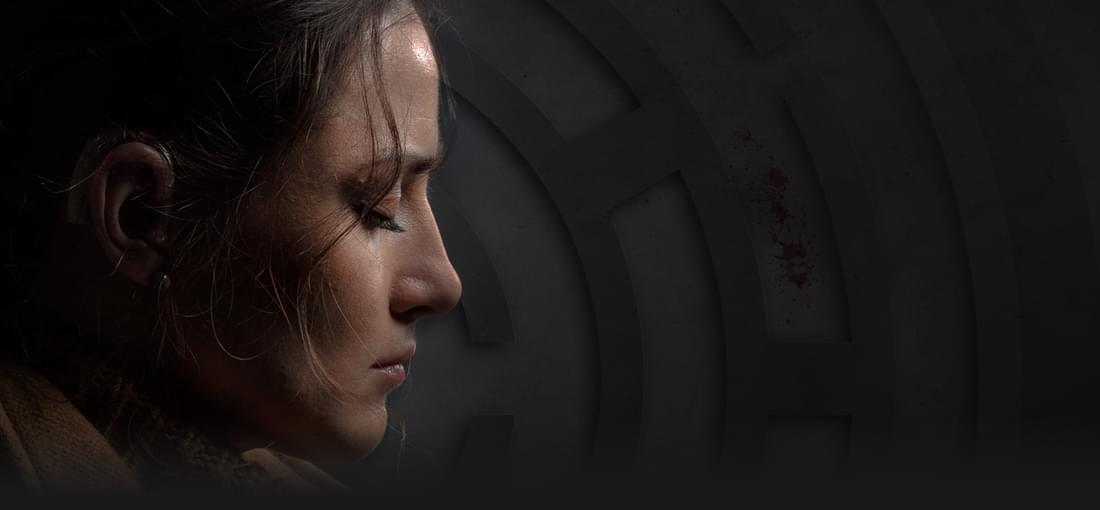
The developers of ‘She Sees Red’ made it very clear that this title is an interactive movie. Essentially, it’s a visual novel, but with full-motion videos (FMV). In each playthrough, players make decisions that will affect how the story unfolds. Different decisions can reveal background information that complete the overall narrative. Given that, players are expected to go through ‘She Sees Red’ multiple times – at least twice. Each playthrough lasts a bit longer than 30 minutes, so players will get anywhere from 1 to 1.5 hours out of this title at the minimum. Adamant on unlocking and viewing all 62 unique scenes, I spent just a bit more than 3 hours on it. Whether or not ‘She Sees Red’ is worth the current price point will depend on how much you’re willing to spend on buying a movie or TV show digitally. Yet, don’t let ‘She Sees Red’ being an FMV title fool you: it features performances, cinematography, and fight choreography that are actually pretty darn great. It has high production value and it’s well edited. During the first couple of playthroughs, I was intrigued by the story. I remained curious as I tried to unlock other endings during my third and fourth playthroughs. The title did overstay its welcome after that, but that’s in part due to my quest to unlock all scenes. Although ‘She Sees Red’ tells you how many unique scenes you’ve viewed, it doesn’t tell you which ones you’ve missed. Because of that you’ll have to keep track of the decisions you’ve made and the paths you’ve taken. Sometimes the scenes are so subtly different that I didn’t realize I was watching a new one. Although you can skip scenes you’ve already watched, you can’t just jump to a story branching point. It’s a missing feature that would have earned this title a perfect score. Still, I really enjoyed ‘She Sees Red’ in spite of that one flaw. It’s entertaining as long as you keep your expectations in check. It makes for a fun diversion from playing bigger, more elaborate games.

‘Lumino City’ is a delightful, charming point-and-click adventure/puzzle game. The first thing about the game that captivated me was the graphics. The handcrafted setting – made with real objects like cardboard, wooden sticks, and glass/plastic balls – gives this game a whimsical look. In this game, you play as Lumi in your search for your grandfather. All he left for you is a handyman’s manual that acts as the game’s in-game hint book and solutions manual. The threadbare story of ‘Lumino City’ is simply there to deliver you puzzles to solve one after another. Every area of Lumino City you visit will require you to solve a puzzle or two before you can proceed. In the past, I’ve complained how arbitrary some puzzles are in adventure games. The fact that these puzzles don’t fit organically into the game’s time period or landscape would irk me slightly. The collection of puzzles in ‘Lumino City’ is no different by itself. Yet, because of the quirky, charming tone is set immediately upon you taking your first step into the titular city, this eclectic assortment of puzzles seems more acceptable. The puzzles in ‘Lumino City’ aren’t terribly challenging in general, with exception to two or three. They’re pretty small in scope, making it easy to experience the game in piecemeal. Still, it’s a shame that the extent of the puzzles can’t match the ambition and scope of the game world design, and is rather confined. At least the game doesn’t feature any overused sliding puzzles and switcheroo/hop-over puzzles. Despite my complaints, I was never bored playing ‘Lumino City’. I had a good time playing it, feeling adequately challenged by the puzzles, and enjoying the colourful beauty of the game world at every turn. Sure, the “story” doesn’t explain much until the credits, but I love how wholesome the game is. ‘Lumino City’ may not be a perfectly crafted game, but it’s easily one of my favourites because of its artistic design, presentation, and overall fun.
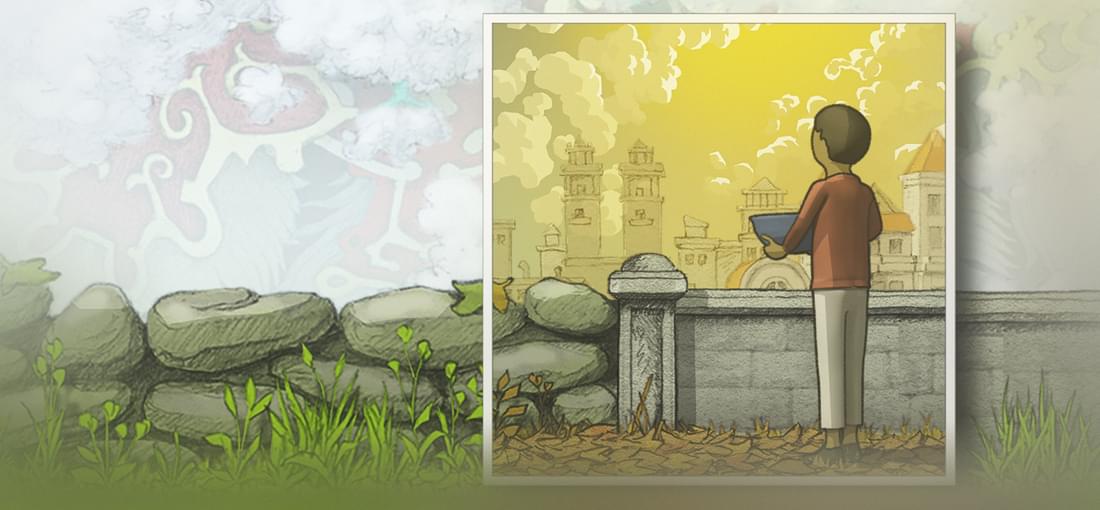
‘Gorogoa’ is one of the most captivating and more challenging puzzle games I’ve played. It was meticulously designed, with the puzzles and story being layered and tightly woven together. The puzzles are unique in that they require you to visualize the game world differently, and dissect images into their parts. The game involves manipulating pictures in a 2 x 2 grid. Each picture tells a small part of the story like in a comic strip, and is itself a puzzle or part of a bigger one. Some pictures are made up of a few layers of drawings, which can be stripped off and recombined to form new ones. By deconstructing, zooming in and out of, and moving images, you push the story forward and uncover the backstory of the titular monster. Once you’ve seen how various layers of art in one picture can fit with the others in a totally separate image, you’ll see the brilliance of the art and puzzle designs. You can tell developer Jason Roberts had put much thought and effort in the creation of ‘Gorogoa’. It’s truly an admirable feat for him to design this fun and stimulating game by himself. It may disappoint some players that they can complete ‘Gorogoa’ within a few hours or less. Yet, quality exceeds quantity here, as the art composition is simply astonishing. The learning curve in ‘Gorogoa’ is just right, though the puzzles got noticeably harder by the middle chapter. Still, with a bit of thinking and trial and error, they’re all reasonably solvable. Once you’ve finished the game, its 2012 demo is unlocked for you to check out. As someone who hadn’t seen or played the demo prior to playing this game, I found it interesting to see how the ideas and art in the demo became more refined and expanded for the final release. It’s very easy for me to recommend ‘Gorogoa’. It’s really worth playing even if it’s just to appreciate the intricate art that Roberts had produce, and see how he used the art as bases of many of its wonderful puzzles.
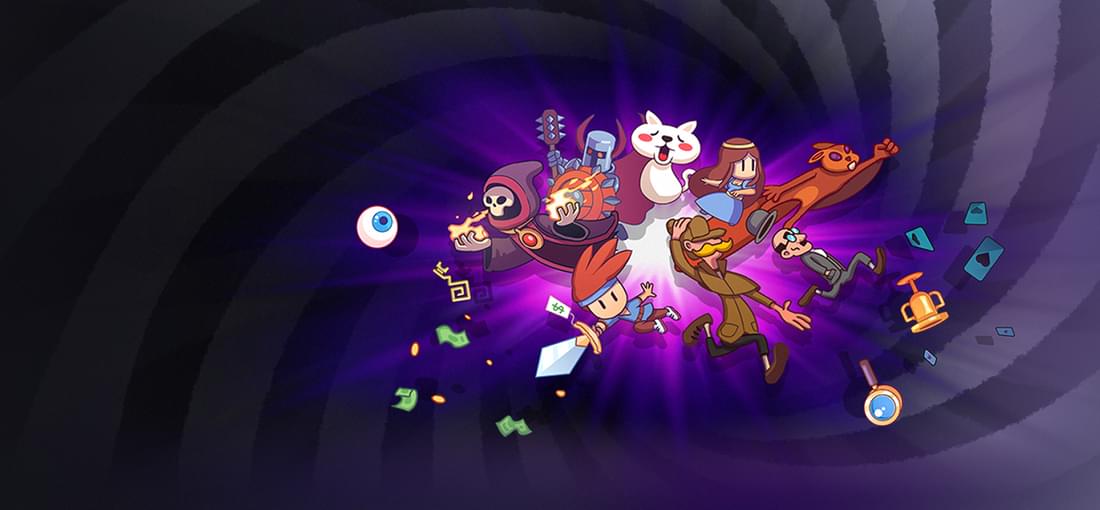
Wife: Are you playing video games again? Me: There is no game. Wife: What do you mean? Look at the screen! You’re playing a game. Me: But it says right here: “There is no game.” Wife: What are these then? Me: VGA/SVGA pixel art. Wife: You mean graphics. Me: I think it’s the user interface. Wife: And are these puzzles? Me: No, I think they’re interactive elements that I can make things happen on screen. Wife: Like in a video game. Me: But, there is no game. Wife: Is that characters talking? Me: I think the program is speaking to me directly. It’s breaking the fourth wall. Wife: What fourth wall? Did you break something? Me: No, the program did. Wife: You mean the game? Me: There is no game. Wife: Okay, fine. It’s NOT a game. What’s it about then? Me: It’s an entertaining, funny satire about various video game genres. Wife: So it’s a video game… Me: There is no… Wife: …about video games. Me: …game. Wife: How much did you pay for this? Me: Not a lot…it’s a good deal! I’ve already spent close to 10 hours on this. Wife: You’ve spent close to half a day playing this? Me: Yeah, I couldn’t figure out how to get past a few parts. Wife: Not that bright are you? Me: … Wife: Whatever. Just don’t play games all day. Me: There is no game. Wife: You’re sleeping on the couch tonight. * Not actual conversation between my wife and me.
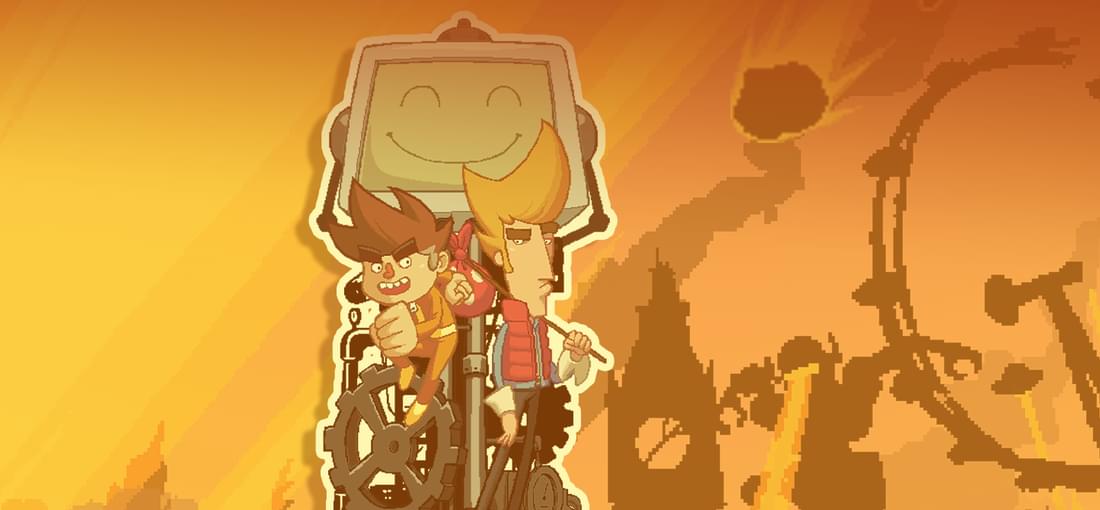
11 years after their last collaboration, Ben Ward and Dan Marshall released ‘Lair of the Clockwork God’. This game is unlike their previous works in that it’s a platforming and adventure game hybrid. In ‘Lair’, Ben has remained faithful to old-school adventure games, and Dan has moved on to side-scrolling action platformers. Ben refuses to do anything action-y (not even taking a step up or down) and Dan refuses to pick up anything or solve any puzzles. Their divergence sets up some interesting gaming fun. The mix of action platforming and adventure gameplay will require you to switch between Ben and Dan, making use of former’s adventuring skillsets, and latter’s platforming prowess, to complete each level. If you have strong distaste for either genre, ‘Lair’ may not be for you. If not, you just may find this game to be one of the more innovative, creative, and funny games to be released in recent years. I found the difficulty level of ‘Lair’ to be just right. While I’m not that great at platformers, I never found the platforming to be frustrating. Both adventuring and platforming sections require lateral thinking at times, especially when there are cleverly implemented fourth-wall-breaking gameplay. To write more about this will simply give the brilliant parts away. Humour in ‘Lair’ is on-point: self-referential and geeky, sprinkled with puns, pop culture references, as well as mature and scatological jokes. The gags start from the very beginning (check out the title cards) and don’t stop until the game is over. All the while, Ben and Dan don’t shy from commenting on game designs and tropes of past and present. I think fans of video games will find their insight both funny and perceptive. I find it very easy to recommend ‘Lair’. It’s fun, smart, witty, and well-designed. Although its mixed genre gameplay may give you pause in getting it, I believe you will find it to be nicely balanced, and you will likely enjoy it regardless of your genre of preference.